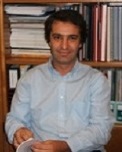
Luis F. Guido
University of Porto, Portugal
Title: Detection and quantification of acrylamide in cookies by LC-ESI-Orbitrap
Biography
Biography: Luis F. Guido
Abstract
Acrylamide (AA) is a molecule which is easily formed in food rich in carbohydrates, such as cookies, and breakfast cereal, at temperatures above 120 °C. This discovery caused some alarm and immediately enough pressure on the food industry in order to conduct research on the acrylamide content in their food products. Thus, it is eminent the need to detect and quantify the acrylamide content in the final products of food industry, in order to delineate the limits and mitigation strategies. In this context, the main purpose of this project was to optimize and apply a method of analysis and quantification of acrylamide for specific food matrices of cookies, by using LC-MS/MS with electrospray ionization and Orbitrap as mass analyser. The developed analytical method showed good repeatability, with a coefficient of variation of 11.1% (254.1 to 292.0 μg/kg). Results for AA concentration obtained vary between 323.7 and 2056.1 μg/kg. During cooking it was observed an increase in acrylamide concentration, as well as between samples taken from different areas of the baking belt. Statistical processing of data was performed in order to compare the acrylamide levels with several production parameters, such as time/cooking temperature, placement on the cooking conveyor belt, color and moisture for different cookies. The composition of the raw materials of the cookies was statistically the most correlated factor with the AA content when considered all samples. The statistical treatment presented herein enables an important prediction of factors influencing AA formation in cookies for development of mitigation strategies.

